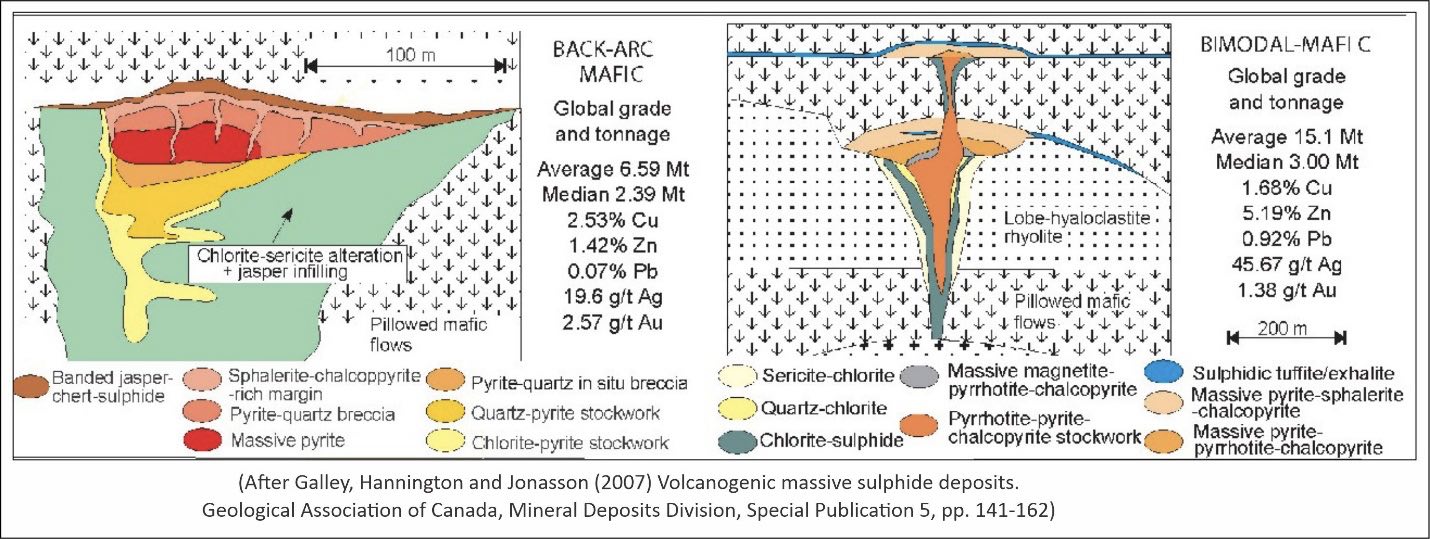About VMS Deposits
Volcanogenic massive sulphide (‘VMS’) deposits have been explored for and been mined since ancient times. They commonly host high copper and zinc minerals with associated gold, silver and cobalt values that are needed now to support the global green energy revolution.
These deposits commonly form where the earth’s tectonic plates are spreading, such as the oceanic Mid-Atlantic ridge, or above subduction zones where there are major fault zones and tectonic movement such as around volcanic islands, often called ‘back-arcs’. They form when marine waters circulate through the fractured rocks scavenging copper, zinc and other metals from the surrounding volcanic rocks and from the hot magmas that are ascending along the fractured zones. The hot metal-rich waters are then expelled into the cold marine waters where they form mounds with dark metal-rich clouds above their volcanic vents, called ‘black smokers’. Contact and mixing with the cold marine waters cause the warm hydrothermal smokers to precipitate their metals in layers near their vents later to be covered by other mafic volcanic rocks and/or volcanically-derived sediments. There may be multiple black smoker vents associated the oceanic ridges and fault zones forming multiple VMS deposits in a favourable geologic setting.
There six different types of VMS deposits identified worldwide. In the case of the York Harbour mineralization, it is referred to as the ‘Mafic Volcanic’ type, often called the ‘Cyprus-type’ due to their similarities in host rocks, copper-zinc dominant mineralization and other structural and alteration characteristics.

